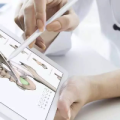肩袖损伤(Rotator Cuff Tears)检查
原创马明医生 2019-12-17
来自专辑
肩袖损伤

Doctor Examination
Medical History and Physical Examination
After discussing your symptoms and medical history, your doctor will examine your shoulder. He or she will check to see whether it is tender in any area or whether there is a deformity. To measure the range of motion of your shoulder, your doctor will have you move your arm in several different directions. He or she will also test your arm strength.
医生检查
病史及体格检查
在询问了症状和病史之后,医生会检查您的肩部,检查是否有压痛或变形的区域,朝几个不同的方向活动手臂来检查肩的活动范围,也会检查手臂的力量。

Your doctor will test your range of motion by having you move your arm in different directions. 您的医生会让您的手臂朝不同的方向活动来检查肩的运动范围。
Your doctor will check for other problems with your shoulder joint. He or she may also examine your neck to make sure that the pain is not coming from a "pinched nerve," and to rule out other conditions, such as arthritis.
医生也会检查您的肩关节是否有其他问题。也会检查颈部,以确保疼痛不是来自“神经压迫”,并排除其他疾病,如关节炎。

Imaging Tests
Other tests which may help your doctor confirm your diagnosis include:
- X-rays. The first imaging tests performed are usually x-rays. Because x-rays do not show the soft tissues of your shoulder like the rotator cuff, plain x-rays of a shoulder with rotator cuff pain are usually normal or may show a small bone spur.
- Magnetic resonance imaging (MRI) or ultrasound. These studies can better show soft tissues like the rotator cuff tendons. They can show the rotator cuff tear, as well as where the tear is located within the tendon and the size of the tear. An MRI can also give your doctor a better idea of how "old" or "new" a tear is because it can show the quality of the rotator cuff muscles.
影像检查
其他可以帮助医生确诊的检查包括:
X射线 首先进行的影像学检查通常是X射线。因为X光不能显示像肩袖那样软组织,所以肩袖疼痛的普通X光通常是正常的,或者仅显示小骨刺。
磁共振成像(MRI)或超声波 这些检查可以更好地显示软组织,比如肩袖肌腱。可以显示肩袖撕裂,以及撕裂在肌腱内的位置和撕裂的程度。核磁共振也可以更好地了解撕裂是“旧伤”还是“新伤”,因为它可以显示肩袖肌肉的特性。


肩部检查试验视频见公号
















































